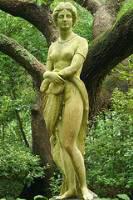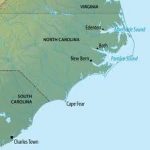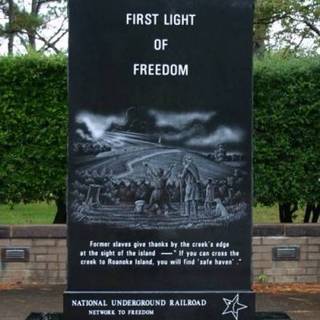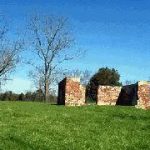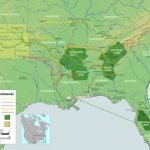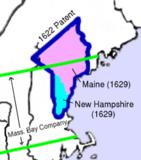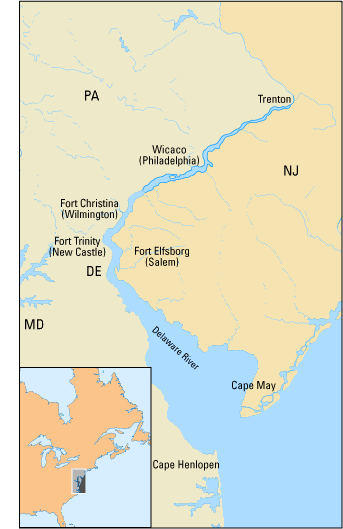First English Child Born in America
In 1587 an expedition organized by Sir Walter Raleigh established the first English colony of 117 people in the New World – on the island of Roanoke off the northeast coast of present-day North Carolina. On August 18, 1587, just fifteen days after the colonists had arrived and established what would become the Lost Colony of Roanoke, the first English child was born on American soil. Her name was Virginia Dare.
On March 25, 1584, Queen Elizabeth I granted Sir Raleigh a charter to establish a colony in North America, or lose his right to colonization. On what is now called the Outer Banks of North Carolina, Sir Walter Raleigh established three separate colonies on Roanoke Island.
In 1587, the third and final settlement, consisting of 120 men, women and children, was sent to Roanoke Island under the leadership of Governor John White, an artist and friend of Raleigh who had accompanied the previous expeditions to Roanoke. This was Raleigh’s last attempt to establish a permanent English settlement in what later became the Virginia Colony.
On August 18, 1587, just fifteen days after the colonists had arrived, Virginia Dare was born to White’s daughter Eleanor. The baby’s father Ananias Dare served as one of the governor’s assistants. Her baptism on Sunday following her birth was the second recorded Christian sacrament administered in North America. The first baptism had been administered a few days earlier to Manteo, an Indian chief who had been christened as “Lord of Roanoke.”
The colony soon ran short of supplies, and Governor White was forced to return to England for provisions. Left behind were 118 colonists – the 90 men, 17 women and 11 children who had made the Atlantic crossing – plus White’s newly born granddaughter Virginia Dare.
A secret code was arranged that if the colonists left Roanoke Island while he was away, they were to leave White a message by carving their new location on a conspicuous tree or post. If the move had to be made because of an attack, either by Indians or Spaniards, they were to carve over the letters with a distress signal in the form of a Maltese cross.
White sailed for England in late 1587. When he arrived, the country was being threatened by the Spanish Armada. Because of England’s continuing war with Spain, White was not able to mount another resupply attempt for three more years. He finally gained passage on a privateering expedition that agreed to stop off at Roanoke on the way back from the Caribbean.
White landed on August 18, 1590, on his granddaughter’s third birthday, but found the settlement deserted. His men could find no trace of the colonists, nor was there any signs of a struggle or battle. The only clue was the word Croatoan carved into a post of the fort and Cro carved into a nearby tree. All the houses and fortifications had been dismantled, which meant their departure had not been hurried.
Since there was no cross, White took this to mean they had moved to Croatoan Island (modern spelling Croatan), which is near Cape Hatteras, North Carolina. The Roanoke Island colonists might have fled there because of their friendship with Manteo of the Croatoan Tribe. Manteo had been “civilized” by the English during a trip to London in 1584, where he had met Governor John White.
It was late in the season, and fearing the violent storms which he knew prevailed on the coast at that time of year, White searched no further but hurried back to England with the sad tidings of the uncertain fate of the colonists. White was never able to raise sufficient funds or provisions to return to America again.
Nothing else is known of Virginia Dare’s presumably short life. There are a number of theories regarding the fate of the colonists, the most widely accepted one being that they sought shelter with local Indian tribes, and either intermarried with the natives or were killed.
It was conjectured that the faithful Lord of Roanoke had saved their lives, and when they seemed to be abandoned by their countrymen, they had assimilated into a native tribe. A tradition of the Hatteras Indians later stated that such was the fate of the colony. When European settlements were finally made in that region, individuals of the Hatteras Indians bore the physical characteristics of the Indian and the Englishman.
William Strachey, a secretary of the Jamestown Colony, wrote in The History of Travel Into Virginia Britannia in 1612 that there were reportedly two-story houses with stone walls at the Indian settlements of Peccarecanick and Ochanahoen. The Indians supposedly learned how to build them from the Roanoake settlers. Strachey also wrote that four English men, two boys, and one maid had been sighted at the Eno settlement of Ritanoc. For four hundred years, various authors have speculated that the captive girl was Virginia Dare.
To this day, no one is certain what happened to what became known as the Lost Colony of Roanoke. The modern Lumbee tribe, has claimed descent from the Croatoan and the English survivors.
SOURCE
Virginia Dare
Roanoke Island Colony
Wikipedia: Roanoke Colony
